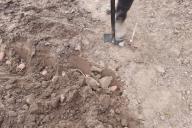Mold in the bathroom not only spoils the appearance, but also poses a health hazard.
It is especially insidious in the joints between tiles, where moisture and heat create ideal conditions for the growth of fungus.
You can get rid of this scourge if you know the right methods and means.
Causes of mold
High humidity and poor ventilation are the main factors that contribute to mold growth in the bathroom.
The joints between tiles are particularly vulnerable, as moisture easily penetrates the porous structure of the grout. In addition, temperature changes and condensation on cold surfaces aggravate the situation.

Preparing to Fight Mold
Before you start cleaning, you need to ensure good ventilation of the room. You should open the windows and doors, and if you have an exhaust hood, turn it on at maximum power.
It is also important to wear protective gloves and a respirator to avoid exposure to harmful mold spores.
Mechanical cleaning
To remove visible traces of mold, you can use a stiff brush or an old toothbrush.
Clean the seams thoroughly, paying particular attention to the areas with the greatest damage. After mechanical treatment, wipe the surface with a damp cloth to remove any remaining mold and dust.
Chemical means of control
There are many special mold removers available in stores. They usually contain chlorine or other active ingredients that are effective in killing fungi.
When using such products, it is important to strictly follow the instructions and ensure good ventilation of the room.
Folk methods
For those who prefer natural remedies, there are effective folk methods of combating mold.
Vinegar, hydrogen peroxide, or a solution of baking soda can help remove the fungus. Apply the chosen solution to the affected areas, leave it for a while, then rinse thoroughly with water.
Prevention of recurrence
Once mold has been successfully removed, it is important to take steps to prevent it from returning.
Regular ventilation, the use of dehumidifiers and maintaining cleanliness in the bathroom will help create unfavorable conditions for the growth of mold.
Sealing of seams
For long-term protection against mold, it is recommended to treat the seams with a special sealant. It will create a waterproof barrier that will prevent moisture penetration and mold growth in the future. Before applying the sealant, make sure that the seams are completely clean and dry.
Improving ventilation
Installing a quality ventilation system or regularly using an exhaust fan will help reduce the humidity level in the bathroom.
Open windows after taking a shower or bath to allow air circulation and rapid evaporation of moisture.
Regular care
Regular cleaning and timely removal of small mold spots will prevent its spread. Use special cleaning products for tiles and grout that contain components that prevent the growth of fungus.








